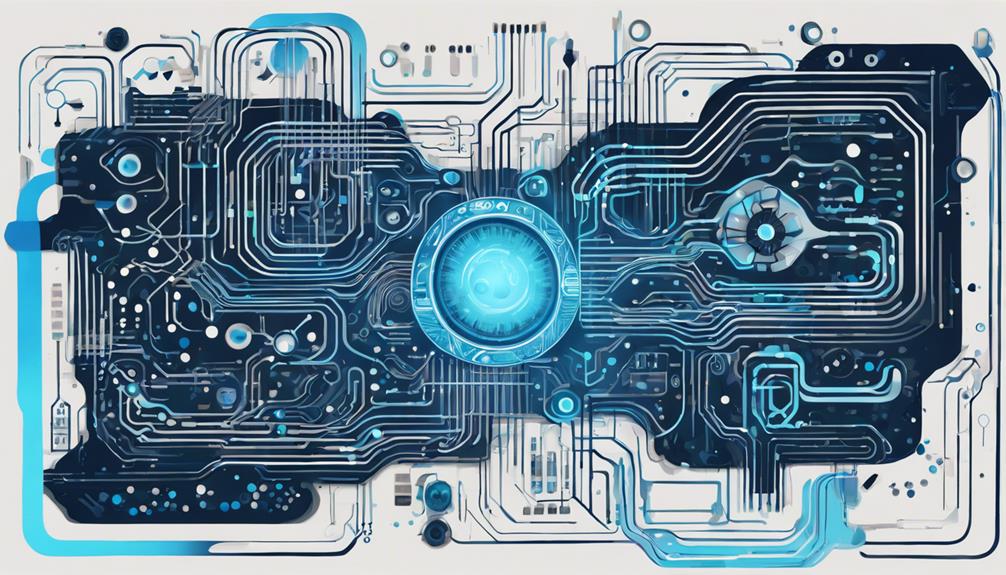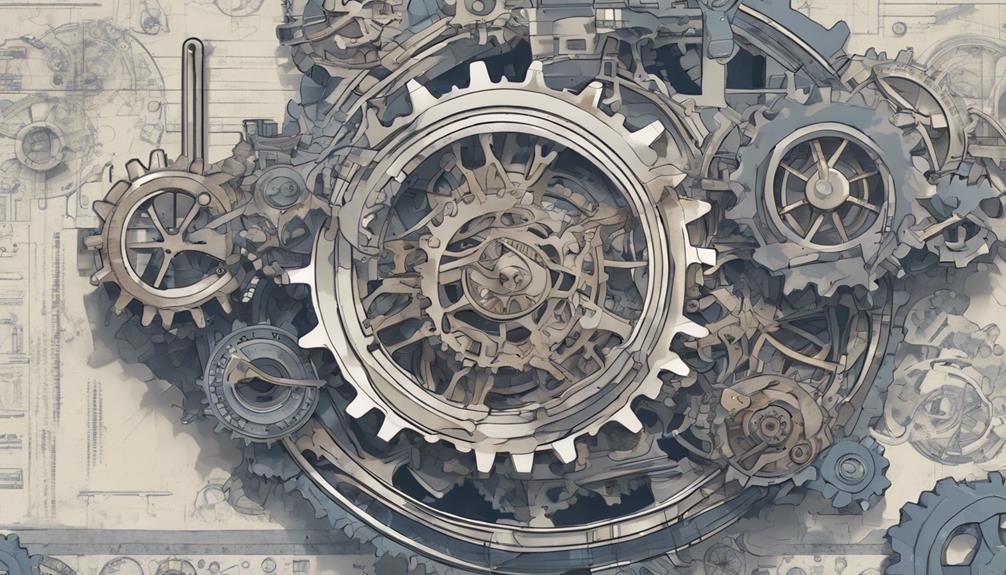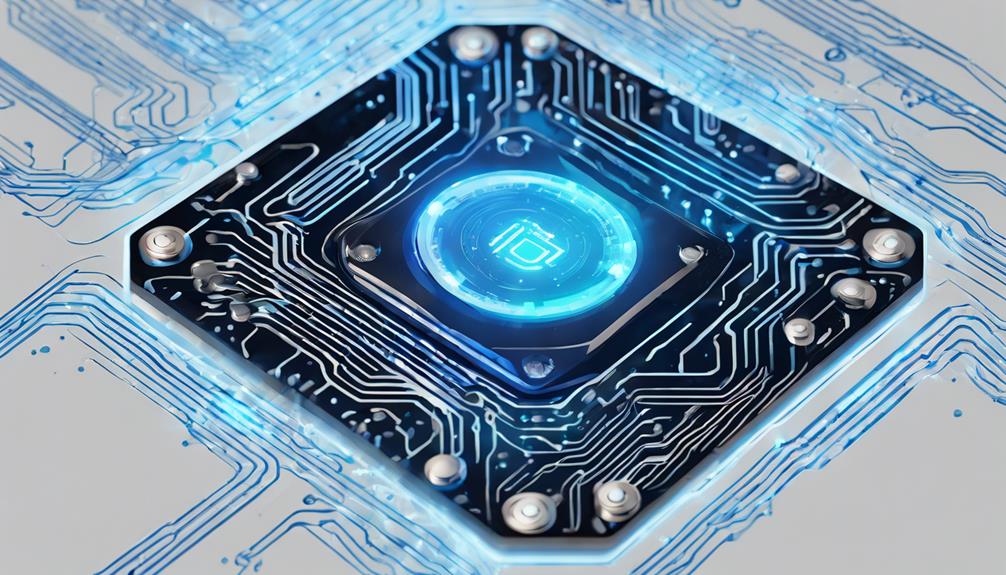When designing printed circuit boards (PCBs), three essential considerations for manufacturability are critical. To start with, integrating designing for manufacturability (DFM) principles early in the design process is key to preventing fabrication and assembly issues. Next, optimizing component placement strategies can reduce assembly time and enhance production speed. Lastly, simplifying PCB complexity by minimizing unnecessary components is vital for efficient manufacturing and cost-effectiveness. By focusing on these essential considerations, designers can guarantee reliable, manufacturable, and cost-effective PCB designs. To further optimize PCB designs for manufacturability, it is important to examine each of these considerations in greater detail.
Key Takeaways
- Optimizing PCB layout topology is crucial for preventing fabrication and assembly issues in manufacturable designs.
- Effective component placement strategies reduce assembly time, enhance production speed, and ensure signal integrity.
- Simplifying PCB complexity by eliminating unnecessary components reduces production costs, enhances quality, and improves manufacturing efficiency.
- Integrating design for manufacturing (DFM) philosophies early in the design process decreases product development time and repair costs.
- Implementing lean design principles and minimizing component count streamlines manufacturing processes and reduces assembly time.
Designing for Manufacturability
Optimizing PCB layout topology through designing for manufacturability (DFM) is essential to preventing fabrication and assembly issues that can lead to costly delays and repairs. By incorporating DFM principles into the design process, manufacturers can guarantee that their PCB designs are optimized for efficient and cost-effective production.
This involves implementing design for manufacturing (DFM) strategies, which encompass both design for fabrication (DFF) and design for assembly (DFA) practices. By doing so, manufacturers can streamline their manufacturing processes, reduce the risk of defects, and improve overall product quality.
Effective DFM practices also enable designers to create PCB layouts that minimize signal integrity issues, reduce component placement errors, and adhere to strict design rules. By integrating DFM philosophies early in the design process, manufacturers can decrease product development time, lower repair costs, and enhance the success of initial production builds.
Ultimately, DFM plays a critical role in guaranteeing that PCB designs are manufacturable, reliable, and cost-effective.
Component Placement Strategies

Effective component placement strategies are essential for guaranteeing efficient assembly and manufacturing processes, as they directly impact the overall functionality and reliability of the printed circuit board (PCB). A well-planned component placement sequence can greatly reduce assembly time and secure a smooth manufacturing process. To achieve this, components should be organized logically to minimize errors and enhance production speed.
| Component Type | Placement Consideration | Benefits |
|---|---|---|
| High-power components | Place near power sources | Reduces noise susceptibility |
| Sensitive components | Place away from noise sources | Secures signal integrity |
| Components with high routing priorities | Place near signal paths | Simplifies routing and reduces congestion |
Simplifying PCB Complexity

By eliminating unnecessary components and streamlining the design, manufacturers can greatly reduce production costs and enhance the overall quality of the printed circuit board. Simplifying PCB complexity is an important aspect of manufacturable PCB designs, as it directly impacts the efficiency and cost-effectiveness of the manufacturing process.
Overcomplicating PCBs with multiple components can lead to increased costs and errors, making it essential to adopt lean design principles that streamline manufacturing processes and reduce assembly time.
To achieve this, designers should focus on minimizing the number of components on a PCB, which improves efficiency and cost-effectiveness. This approach enhances manufacturability and overall product quality.
Here are three key considerations for simplifying PCB complexity:
- Reduce component count: Minimize the number of components to reduce assembly time and costs.
- Simplify design: Eliminate unnecessary components and simplify the design to improve manufacturability.
- Optimize layout: Ensure efficient component placement to reduce errors and improve efficiency.
Frequently Asked Questions
How Do You Ensure That a PCB Design Is Manufacturable?
As the fate of your PCB design hangs in the balance, the question echoes: how do you guarantee manufacturability?
The answer lies in a harmonious marriage of design and manufacturing considerations. By maintaining a safe component-to-edge distance, avoiding overstuffing, and simplifying the design, you pave the way for efficient production.
The cherry on top? Collaborating with your manufacturing vendor from the outset to identify and rectify potential pitfalls, guaranteeing a seamless shift from design to reality.
What Are the General PCB Design Considerations?
When designing a printed circuit board (PCB), several key considerations are paramount to guarantee a successful outcome. General PCB design considerations include:
- Careful selection of board dimensions
- Strategic component placement
- Thoughtful routing priorities
Additionally, environmental concerns, such as operating temperature and humidity, must be taken into account to secure peak performance and reliability.
What Are the Key Considerations When Creating a Schematic Design for a Pcb?
When crafting a detailed design for a PCB, the stakes are high. A single misstep can trigger a cascade of errors, derailing the entire project. To avoid this, prioritize clarity and precision.
Begin by meticulously detailing board functions, features, and interconnections. Then, develop a thorough circuit schematic, specifying component requirements to guide the layout process. By doing so, you'll set the stage for a successful, manufacturable PCB design.
What Are the Different Parameters to Be Considered to Decide the Cost of Manufacturing Pcb?
When determining the cost of manufacturing a PCB, several key parameters must be considered. Board size, material choice, and layer count have a notable impact on cost, with larger, more complex boards being more expensive.
Component complexity, including advanced features like blind vias, also raises costs. Quantity, design complexity, and specialized materials or finishes, such as high-frequency laminates or gold plating, further influence manufacturing costs, making it essential to carefully consider these factors during the design process.


